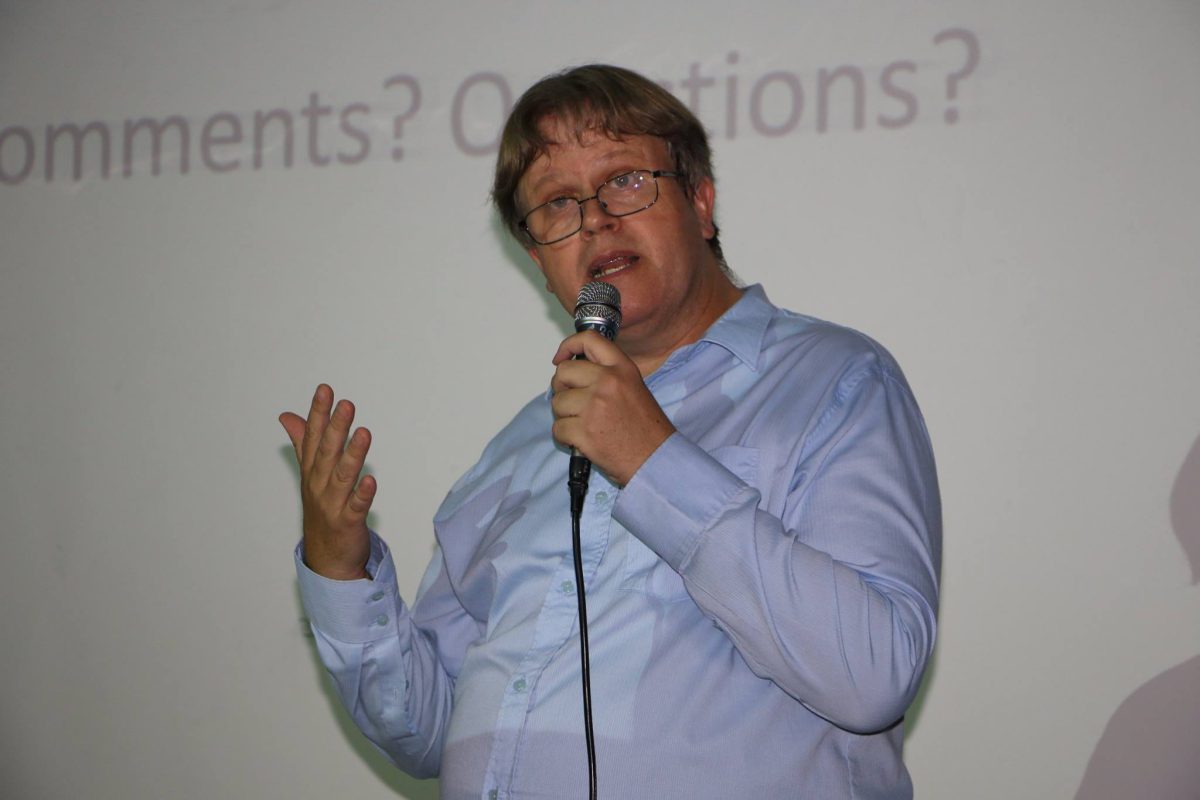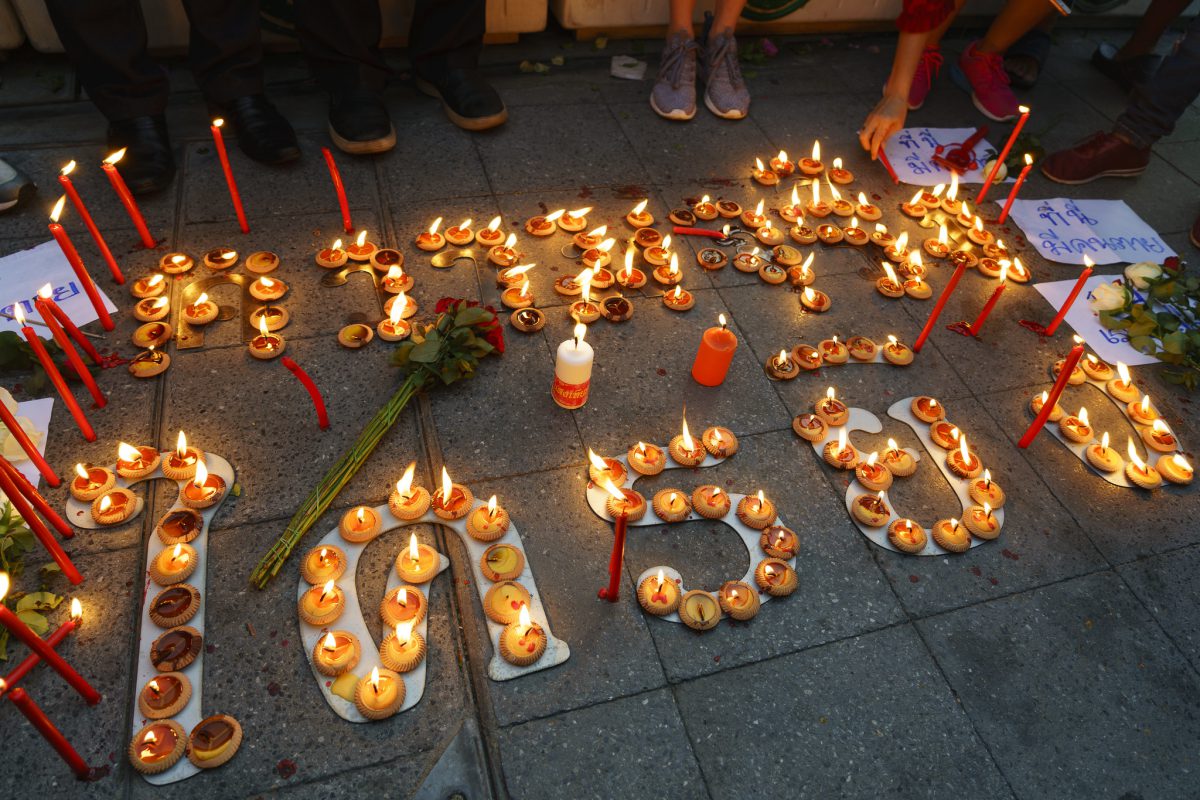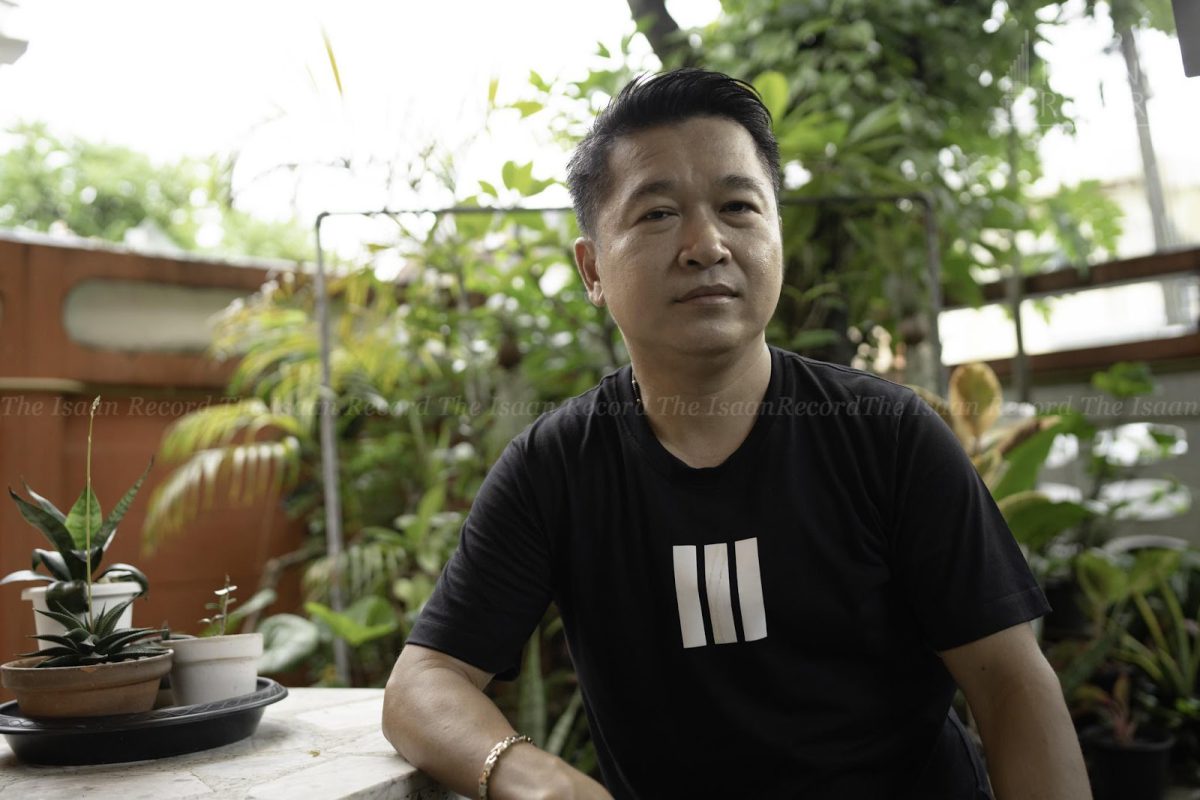
By Hathairat Phaholtap
Since at least 2010, the term khwai daeng [red buffalo] has been frequently used pejoratively in the political discourse to discredit members of the Red Shirt movement, supporters of the Pheu Thai Party or former Prime Minister Thaksin Shinawatra. But in recent years, villagers and pro-democracy activists have reclaimed the slur, partly shifting its derogatory usage.
The Isaan Record’s Hathairat Phaholtap sat down with Saowanee T. Alexander, a linguist and assistant professor at Ubon Ratchathani University’s Faculty of Liberal Arts, to talk about the use and evolution of the term.
“Calling someone a buffalo is to say that they’re stupid [and] has been around in the Thai language for a very long time,” Saowanee says.
But the choice of wording is also a reflection of society’s inequalities and class divisions. Calling someone a buffalo is like holding someone as less than human, and easily led around. “It’s dehumanization,” Saowanee adds.

Both a red buffalo and a human being
In collaboration with Thai studies scholar Duncan McCargo, Saowanee conducted a study on the use of the term. They found an interesting development of how the use of khwai daeng has shifted.
“There are some people who say, ‘Red buffalo. Yeah, that’s me. You got a problem with that?’’” Saowanee says in giving an example of some Isaan respondents in her research. “Most rural villagers already have the sense that they’re considered low-class people in society. They are used to it, so their typical response is to ask the question, ‘So what? I’m a citizen just like you, though, aren’t I?’”
She adds that in actual usage, the term ‘red buffalo’ does not just mean “stupid” but its meaning has snowballed into a catch-all term for “stupid, evil and no-good.” It can also be understood as an antonym to “good people,” which itself has seen in long service as an unironic term of self-congratulation by those who align themselves with the powers that be.
Quelling the red buffaloes
The frequency of the use of the term “red buffaloes” reached its peak just before orders were given for the military to disperse the Red Shirt protests in Bangkok in May 2010. A look at the mainstream media and social media content of the time reveals a sustained and concerted effort to paint the protests in an unfavorable light.
“Much of the mainstream media seemed to have a uniform editorial playbook: that was to paint the Red Shirts, or ‘red buffaloes,’ as too stupid to fully comprehend what they were doing. They were being led by the nose, so it went,” Saowanee summarizes the analysis of the mainstream media’s messaging in her research on the period.
“Across the board, the editorial tone assumed a tone of pity and concern for ordinary rural folk. They portrayed the Red Shirts not as victims of the government or the military, but as victims of their own dumb stupidity as buffaloes,” Saowanee says. “It was beyond patronizing; by painting the Red Shirts as clueless and gullible, the mainstream media simply drove a wagon through the question of whether the protesters had a point that deserved to be addressed.”
For Saowanee, one of the most disturbing findings of her research was that a large number of people in society supported the use of violence against the protesters. These people argued that since the “red buffaloes” had retaliated to violence with violence themselves, they could hardly cry at the use of lethal force against them.
“Seeing people get killed, without any due process whatsoever, and feeling some sense of satisfaction from that–that’s scary. There were also those who displayed a view to the effect that [the ‘red buffaloes’] probably shouldn’t have been killed, but they did ask for it.’” Saowanee finds this to be quite chilling because “they’re admitting to supporting the massacre of people.”
After the bloody events of May 19, 2010, images of Bangkokians coming out for a “Big Cleaning Day”–the clearing of various protest sites around Bangkok–became prevalent in the mainstream and social media. According to Saowanee, this was not only to drive home the point that people in the capital did not agree with the protests, but it also rubbed salt in the wounds of the Red Shirts.
“We saw images of young, well-to-do Bangkokians coming out to ‘clean up,’ looking like they were performing a public service: it was a beautiful image. But when you look at the implications of what they were actually doing–hang on, they literally just swept away all the forensic evidence of the killings!” Saowanee says. “Why the rush to make it all disappear, wash it all away, and forget? Even if they are just stupid ‘red buffaloes,’ don’t they still deserve some due process [as citizens]?”

The culture of impunity
At least 94 people were killed in the clashes of April-May 2010. But no one in any position of responsibility has been brought to justice for the violence. Saowanee regards this as a clear embodiment of Thailand’s culture of impunity; impunity from responsibility and investigation for those in power.
For her, there is a clear connection between this culture of impunity and the discourse of the “red buffaloes.”
“When the language already paints rural villagers as sub-human, as stupid, or whatever, it paves the way for them to be considered as sub-par citizens. You might not even view them as valid citizens,” Saowanee says. “When you’re in this mode of thinking, it’s easier to be indifferent when they’re massacred, even though they’re human beings just like you. They have families, mothers, fathers, children, people they love and who love them. They did what they did under the supposition that it was just in a democracy.”
Saowanee believes that Thai society still has to draw lessons from the events of 2010.
“Perhaps we’re a society that doesn’t want to learn anything. Throughout history, we’ve never questioned those in power. Regardless of what happens, they’re never in the wrong. That’s what happens, instead of finding out the facts, making everything clear, and calling a spade a spade. In other words, it’s still a society with oppression from the top down,” she says.
The violence in Bangkok was also mirrored to a lesser extent in the provinces. In Ubon Ratchathani province, the provincial hall was set on fire, resulting in 60 politically motivated arrests on the pretext of the arson. Eventually, all but 21 were acquitted. Saowanee and some fellow academics fundraised to provide financial aid for the families of the 21 facing legal action, leading to the establishment of the Redfam Fund in November 2011.
This made Saowanee stick out like a sore thumb. In the period after the events of 2010, few academics dared to stand up and be counted as a Red Shirt supporter or sympathizer.
Asked whether she was ever concerned about being labeled as a “Red Shirt academic” or even a “red buffalo” herself, she says: “At some point, you have to get off the fence, and choose a side to land on. After thinking carefully, I no longer cared what people would think of me. I didn’t do that as an academic, but did it as a human being, as a member of society. This is not some far-away thing. It surrounds and concerns all of us.”




